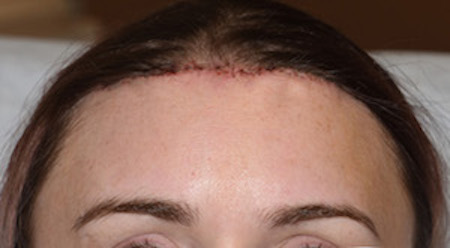Soft tissue reshaping of the forehead consists of two basic types of procedures based on the anatomic landmarks of the eyebrows and the frontal hairline. (at least in women) There is the conventional rejuvenative browlift procedure which elevates or alters the shape of the brows at the lower end of the forehead. At the superior end of the forehead is the hairline whose position and shape can be surgically altered, most commonly in the forward/inferior direction.

In the July 2021 issue of the Archives of Aesthetic Plastic Surgery an article was published on this topic entitled ’Upper Facial Surgery: Simultaneous Hairline-Lowering Surgery During Endoscopic Forehead Lifting’. In this paper the authors looked at concurrent frontal hairline advancement with an endoscopic browlift technique for the high hairline female. A single hairline incision is used to perform both procedures. A bone tunnel suture technique was used for the advanced scalp flap fixation.
Nearly 200 patients were treated with this combination forehead surgery. The average central hairline lowering was 18mms while the average browlifting effect was 5mms.
One of the really unique features of doing a combined scalp advancement and browlift through a hairline incision is that forehead skin is actually removed, unlike an endoscopic browlift where no skin is removed and the hairline is potentially shifted even higher. There is the synergistic effect of lowering the hairline with the browlift which makes the whole forehead look smaller.

One can have a debate about whether the browlift done at the time of the frontal hairline advancement should be done open or endoscopically. Once the hairline incision access exists the value of the endoscopic approach is diminished. But this choice really comes down to surgeon preference.
Dr. Barry Eppley
Indianapolis, Indiana



